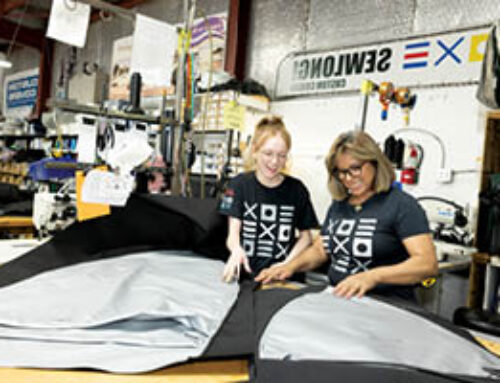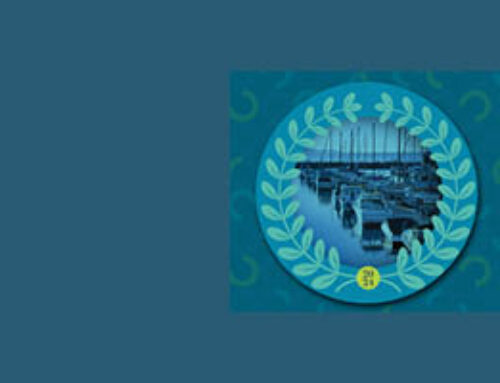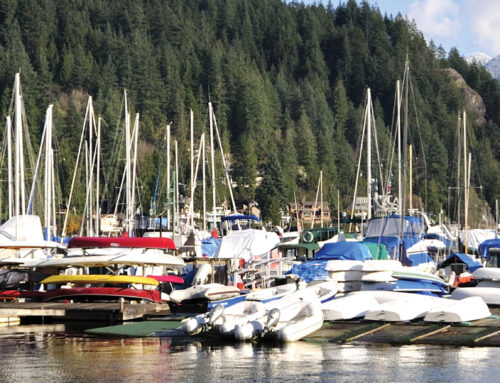All feet on deck
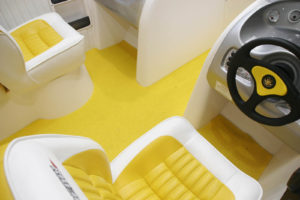 Marine flooring moves away from carpet to favor synthetics.
Marine flooring moves away from carpet to favor synthetics.
If your clients plan to sail “where the ocean is deep,” as avid sailor Billy Joel sings, their boats had better be sturdy in every respect, including flooring. Even if the most excitement those boats ever see is a lazy afternoon moored to a dock, flooring nonetheless endures a lot of abuse: foot traffic, maybe a dropped cigarette, ultraviolet radiation, you name it. No wonder the traditional gold standard for marine decking has been teak, a wood whose dense grain and high oil content provide strength and durability.
So a client could pretend they’re a Rock and Roll Hall of Famer and ask you to install teak decking for a cool $130 to $160 per square foot, based on its price in December 2015. Or, you could earn your customers’ gratitude by suggesting options from among a variety of attractive and sturdy—but considerably less expensive—trends in marine flooring.
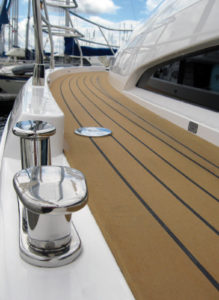
AmeriTeak Marine’s Dek-King Weld synthetic flooring is adhered directly to the deck underneath, and even recreates the grout lines of real teak flooring.
Synthetic teak
PlasDECK exterior marine decking, for example, replicates the look of traditional teak but is made of PVC with high UV protection. (And costs, installed, about $45 a square foot.) Sales are constantly growing, reports Jennifer LittleBear, who coordinates international sales for this flooring’s Akron, Ohio-based manufacturer, PlasDECK Inc., and its sibling company, PlasTEAK Inc. The latter manufactures interior marine vinyl flooring in styles that include those resembling classic teak and holly cabin sole. “We have been selling PlasTEAK ‘Teak & Holly’ for about 10 years now, and sales are constantly increasing,” she says.
Increased interest in synthetic wood flooring for marine interiors has been noticed by Austin, Texas-based Ameriteak Marine LLC, according to General Manager Jerry Tatton. Sales of the company’s Lonseal Lonwood vinyl flooring, which replicates traditional interior teak and holly, have been trending upward, he reports.
Meanwhile, sales of Ameriteak’s two exterior options for teak-look decking, one installed with glue and the other by heat welding, are running “almost 50-50,” he continues. The company’s Dek-King’s tongue-and-groove system is glued in place, but once a fabricator becomes comfortable using a heat-welding rod, Dek-Weld usually becomes his or her preferred method of installation, Tatton adds, “due to quicker set-up time versus waiting for glue to dry.” Not surprisingly, sales of Dek-Weld are pulling ahead of Dek-King, although Tatton’s hunch is that “the glued version will always be the method of choice for the DIY customer.”
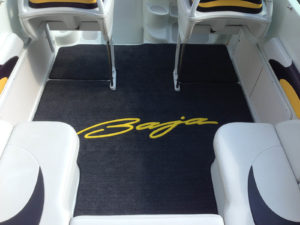
This example of AquaMat from Corinthian Marine Carpet gets a pop of color from an inlaid logo.
Matting
When it comes to flooring options other than synthetic teak, “carpet is dead,” is the blunt assessment of Cindy Boersema, an experienced marine fabricator and owner of the Nautical Needle in Holland, Mich. “We haven’t sold nearly as much carpet as we have matting,” she says. “As far as trends go, carpet has been out of homes for a while; it’s going to be out of boats pretty quickly, too.” The matting Boersema installs is AquaMat®, which allows water to drain under the mat and is manufactured by Corinthian Marine Carpet, a division of Corinthian Textile Solutions, based in Portland, Ore.
“AquaMat is our brand name for a mat custom-made from any of our products, whether traditional carpet or woven vinyl,” explains Holly Harrison, the company’s vice president of marketing and the head of its marine division. “Known generically as ‘snap-in boat carpet,’ these mats are designed to lie on top of a finished fiberglass liner and are kept in place with snaps or hook-and-loop.”
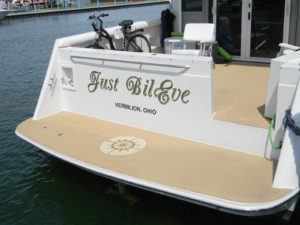
An inlaid compass rose adorns a PlasDECK swim deck.
While Boersema offers Corinthian’s snap-in variety, the newer hook-and-loop type “is growing in popularity,” Harrison says, “because it is easier to install than the snap alternative. With snaps, the boat owner has to have a tool to install them and it has to be done on the boat so that [snaps] match up exactly with the original installation.” In contrast, “the hook-and-loop is a two-piece installation: One piece with adhesive is adhered directly to the fiberglass; the connecting piece is sewn into the edge treatment. It can be adhered to other flooring surfaces including vinyl and wood, assuming the application point can be cleaned appropriately for proper adherence. However, its main use is on a finished fiberglass deck. We have only offered hook-and-loop to fabricators for one season but we’ve been using this methodology on the OEM side for a few years now and it’s working well.”
Another drop-in deck mat option is DECKadence Marine Flooring (DMF). “It allows vast amounts of air and water to pass through,” explains Joel Bartlett, founder and CEO of the California-based company. Although water passes through the back of this flooring it doesn’t make the matting move because, Bartlett explains, its coefficient-rated polyvinyl backing grips the deck. Plus, DMF “weighs about .75 pounds per square foot and a typical installation is 70 square feet, so it won’t budge. It’s dense, yet aerated, and in six years there has not been one issue.” Both OEM sales and dealer sales to marine fabricators are growing, he reports.
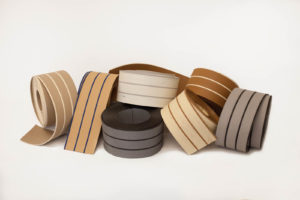
PlasDECK is available in a variety of colors designed to stay 20–30 degrees F cooler than teak when exposed to sunlight.
Matting color, design
“They can even spray on logos and art work,” Bartlett adds, referencing DMF’s best-selling color, which is “Luna Silver, with black logos. Next would be Beach Beige, then White.” All three hues provide a surface that’s cooler to the touch than wood or vinyl, he says.
In Corinthian’s experience, whether a customer chooses a bright or subdued color is “definitely dependent on the type of boat,” says Harrison. “For example, owners of high-performance boats typically select plush flooring that has a splash of color, by inserting a bright color logo. Some opt for all-over color, such as Iris [purple] or Riviera Red; owners of most other boats tend to choose neutral colors, like taupe or gray. Style of flooring varies by boat type, too. Our ‘Moonshine’ Berber carpet is very popular with Sea Ray® owners, whereas our ‘Sterling’ cut-pile is the top choice for water-ski boats.”
Synthetic teak color, design
Among colors available in PlasDECK, “the traditional teak color is still our most popular,” reports LittleBear. Ameriteak’s Tatton observes the same preference among his customers, although, he adds, “in very warm areas such as Texas, there is a trend to go with the Euroteak color because it is a slightly lighter shade and not quite as hot [to the touch].”
LittleBear reports the same phenomenon. “We have definitely noticed a steady increase in the use of our cool colors, particularly in areas with warmer climates. Those shades, like CoolTEAK and Ash, are designed to stay cool in the hot sun. ‘Azure’ decking with glow-in-the-dark caulk lines is also becoming increasingly popular and can add a nice safety feature to a boat deck.”
The company’s “designers have noticed that requests for custom inlaid designs are getting increasingly detailed,” LittleBear adds. In fact, much of the rising sales trend for PlasDECK can be attributed to this material’s capacity for customization with inlays or logos, she believes. PlasDECK offers “a compass rose design that’s very popular and has quite a bit of detail,” she notes, although the custom inlays most often requested by customers are boat names and the names of boat manufacturers.
Install. Wow. Repeat.
Lest marine fabricators mourn the fact that synthetic materials’ ability to replace expensive teak decking means less income per job, here’s solace from Joel Bartlett:
“Most boat owners order one deck covering, but we have had many DECKadence owners sell their boats for an upgrade and reorder.”
Moral: Wow your customers with trending flooring options and you, too, may inspire them to hire you for another project.
Janet Cass is a freelance writer based in St. Paul, Minn.
 TEXTILES.ORG
TEXTILES.ORG 


